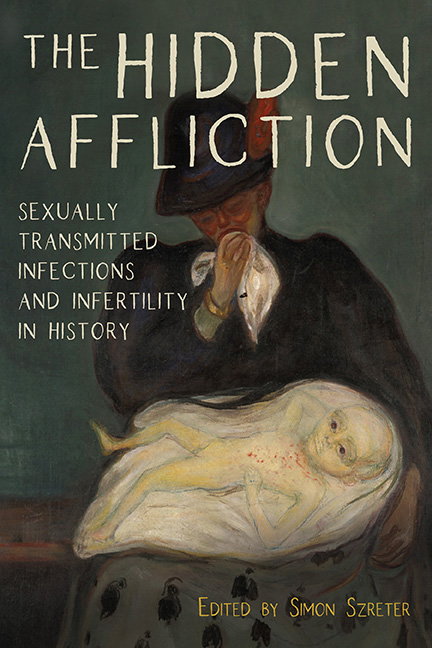Book contents
- Frontmatter
- Contents
- Acknowledgments
- Introduction
- Part One The Hidden Pitfalls in the Early Documentary Record
- Part Two The Biomedical Sciences and the History of the STI Microorganisms
- 3 Bioarchaeological Contributions to Understanding the History of Treponemal Disease
- 4 A Long-Standing Evolutionary History between Chlamydia trachomatis and Humans: Visible Ocular and Invisible Genital Variants
- 5 Chlamydia: A Disease without a History
- Part Three Population Decline in the Global South
- Part Four Infertility and the Specter of Venereal Diseases in Modern Europe
- List of Contributors
- Index
4 - A Long-Standing Evolutionary History between Chlamydia trachomatis and Humans: Visible Ocular and Invisible Genital Variants
from Part Two - The Biomedical Sciences and the History of the STI Microorganisms
Published online by Cambridge University Press: 25 March 2020
- Frontmatter
- Contents
- Acknowledgments
- Introduction
- Part One The Hidden Pitfalls in the Early Documentary Record
- Part Two The Biomedical Sciences and the History of the STI Microorganisms
- 3 Bioarchaeological Contributions to Understanding the History of Treponemal Disease
- 4 A Long-Standing Evolutionary History between Chlamydia trachomatis and Humans: Visible Ocular and Invisible Genital Variants
- 5 Chlamydia: A Disease without a History
- Part Three Population Decline in the Global South
- Part Four Infertility and the Specter of Venereal Diseases in Modern Europe
- List of Contributors
- Index
Summary
Chlamydiae
The most frequently asked questions about Chlamydia trachomatis, commonly known as “chlamydia,” are (1) what is it? and (2) where did it come from? The capricious and cryptic nature of genital infections caused by C. trachomatis and the difficulties in isolating the pathogen have led to many misconceptions about its origins and how infection occurs. The first question is now easy to answer. There is no doubt: chlamydiae are not viruses, nor are they protozoan parasites; they are bacteria. However, they are not free-living bacteria and so cannot be cultivated on conventional media such as agar plates. Chlamydiae are highly specialized bacteria, which can be grown only within living cells; thus they are obligate intracellular pathogens.
Chlamydiae also have a complex developmental cycle. The name is derived from Chlamydozoa, which means “cloaked organisms,” because they develop within an inclusion membrane within the cytoplasm of the cell and initially in the infection process are not visible. These gram-negative bacteria have a unique development cycle that includes the repeated division of a replicating stage, called an RB, or reticulate body. RBs increase in number to a point where they can be seen under the microscope as moving specks within a defined membrane structure known as an inclusion in the host cell's cytoplasm. With time the inclusion ruptures out of the cell and releases the smaller nonreplicating infectious forms called “elementary bodies.”
The genus is also known as Chlamydia; it is a proper noun written in italics, with no plural. The genus Chlamydia currently contains nine species and no doubt, more will be added. The species C. trachomatis, the focus of our discussion, is made up of a number of serovars, differentiated by surface antigens that induce specific antibodies. It has four ocular serovars that cause blinding endemic trachoma, A, B, Ba, and C and at least eight serovars, D to K, which typically cause genital tract infections. There are additionally the three L serovars that cause the condition known as lymphogranuloma venerum. Closely related species are C. muridarum, which infects mice and hamsters, and C. suis, which is endemic in pigs.
- Type
- Chapter
- Information
- The Hidden AfflictionSexually Transmitted Infections and Infertility in History, pp. 124 - 152Publisher: Boydell & BrewerPrint publication year: 2019



